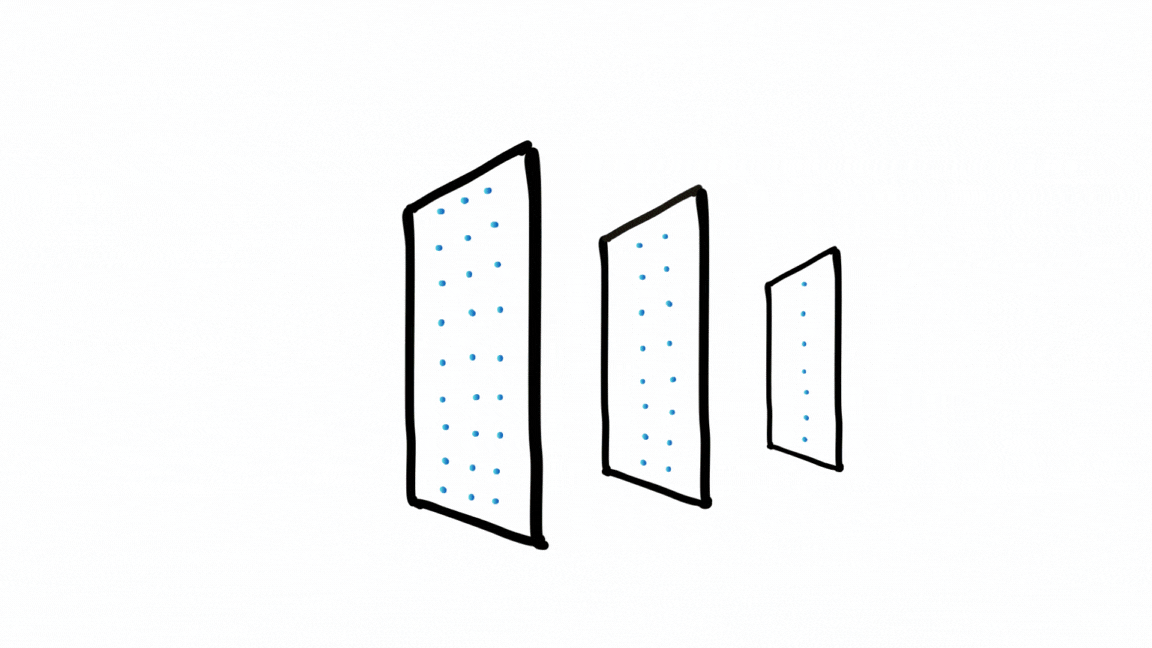5. The Availability & Representativeness Heuristics
The two most ubiquitous heuristics are the availability and the representativeness heuristic (Tversky & Kahneman, 1974).
What Is the Availability Heuristic?
Video playlist can be found on TRU Open Press’s YouTube Channel
Video Transcript
The availability heuristic is, unfortunately, a misnomer. We should instead call it the accessibility heuristic because it involves reasoning and making decisions based on information that is easily accessible in memory. As discussed previously (3. Memory), a lot of information is available in your memory, but a lot less is accessible, and a lot less yet is easily accessible.
Example: Salesperson
Let’s go back to the scenario in the first post (1. What Are Heuristics).
Ding-dong! The doorbell rings. You open the door and see the young person holding their tablet, ready to greet you. This scene immediately brings to mind last week when something similar happened. You opened the door and engaged with the person standing there, who was very determined to sell you a new internet connection. No matter how many options you patiently listened to and declined, they continued pressing. So — this time! — before this person has even had a chance to introduce themselves, you say, “Hi, thank you, but I am not interested.”
This scenario shows the availability heuristic at work. The context is a strong cue to your memory of the previous week. The memory is easily accessible, and you rely entirely on that prior experience to decide what to do in the present.
How is this helpful?
You made the decision quickly and effortlessly and reached a resolution to your satisfaction. For all you know, you just saved yourself 30 minutes of very painful and unproductive back-and-forth about a new cell phone plan!
How is this detrimental?
You don’t actually know what you “saved” yourself from. It could be that this person wasn’t trying to sell anything. Perhaps they were asking for donations for a good cause you support, or they lost their dog in the nearby park and are walking around showing pictures of their pet to raise awareness and ask for help.
Because you didn’t take the time to engage in controlled processing — taking in all the information and considering it before making a decision — you may have, in fact, made an error.
What Is Applicability?
Now is a suitable time to introduce another term — in addition to availability and accessibility — applicability or relevance (Todorov, 2000).
A memory can be easily accessible but not applicable to the current context; in these cases, it can lead you astray. Applicability refers to the degree of overlap between aspects of the current situation and the retrieved memory/information.
In the scenario above, the cues of the doorbell ringing unexpectedly and what the person at the door looked like at first glance made the memory from last week’s encounter accessible. However, there is more to the situation than those limited surface characteristics. The memory may, in fact, not be applicable to the current social situation.
Because heuristics involve using only a few aspects of a situation — usually the most noticeable — to achieve a quick and easy outcome, they may ignore others that happen to be critical for this particular context.
Example: New colleague
Your new colleague strongly reminds you of a politician you know (not personally, just from the news). You dislike this politician, so now you feel surprisingly negative and skeptical towards this new person you have to work with.
In this case, the availability heuristic is affecting your emotions. The physical appearance of your new colleague and/or perhaps their mannerisms activate your memory of this politician you know about. As a result, your opinion of that (obviously, completely irrelevant or inapplicable) individual now affects your thoughts, emotions, and behaviour with respect to this new person.
Let’s link these examples back to some other cognitive concepts presented earlier:
- The first example illustrates how the availability heuristic can use an episodic memory to decide what to do.
- The second example illustrates how the availability heuristic can use a semantic memory to affect first impressions.
In both cases, the defining characteristic is the ease of access. When triggered by the present cues, this memory becomes easily accessible.
What Is the Representativeness Heuristic?
Video playlist can be found on TRU Open Press’s YouTube Channel
Video Transcript
The availability heuristic is not to be confused with the representativeness heuristic. Understanding the underlying cognitive mechanisms of these two heuristics will help you clearly distinguish them — something that can be difficult.
The representativeness heuristic involves reasoning and making decisions based on categorization, or the degree to which the current situation/person/object/event matches one’s prototype of a situation/social/object/event category. This heuristic relies on the automatic activation of semantic memory.
We all have our general knowledge / mental representations of the world:
- What meeting someone for the first time is like.
- What children are like.
- What birds are like.
- What weddings are like.
We have vast knowledge based on past experiences, media, and so on. For the mathematically inclined, you can think of these categories of knowledge and experiences as forming a distribution. This distribution naturally has a lot of variability but also a central tendency.
In cognitive psychology, this central tendency is called a prototype (e.g., a prototype of a bird or a chair). In social psychology — when we talk about people — it is called a stereotype. The central tendency / prototype could be a weighted average if we continue the statistics theme.
For example, your prototype of a bird may be of no one bird in particular but, instead, a collection of all the most common features of birds (medium-sized, feathered, has wings and a beak, flies, lays eggs, etc. — if you are a bird expert or at least enthusiast, you are probably cringing right now). The prototype could also be the mode — the most common bird in your experience.
Similarly, for stereotypes, your stereotype of a scientist may be a weighted average (collection of common features) or a mode (say, for you, physicists may be the stereotypical scientist — lots of people are cringing).
For those who are not mathematically inclined, the talk about variability and central tendency may not have been helpful for you. Instead, you can think of prototypes and stereotypes as embodying the most typical features or examples of the category based on prior experience / information.
You are most likely very familiar with the concept of stereotypes, but have you ever thought of them in these terms?
Truly understanding how stereotypes come about and how they operate — and they do on a daily basis — involves understanding their cognitive underpinnings.
From a cognitive perspective, we acquire knowledge (semantic memory) of social categories the same way we acquire knowledge about everything else (e.g., tools, cars, kangaroos): through experience and exposure to information (e.g., Liberman et al., 2017; Rhodes & Baron, 2019). This knowledge can then be used again in much the same way (e.g., Mitchell et al., 2009) — through either automatic or controlled (or most likely both!) activation of this information.
Learning social categories
Figure 1 shows a visual representation that will hopefully make this concept more concrete. Although it is a schematic of an artificial neural network, you can think of it as an abstraction of layers of cognitive processing. Figure 1 illustrates how we learn two social categories related to professions: computer programmers and athletes.
Throughout our experience, we encounter many examples of both categories. Each person has certain features, such as:
- how they look
- how they move
- how they talk
- what they talk about
- where they go
- what they do
- what their friends are like
These features are represented by the “dots” on the first layer of the figure. These dots combine in various ways — as represented by the dots on the later layers. Of course, many of these features will overlap between the two categories; however, some features and their combinations are seen more often in individuals in one category and less for those in the other, and vice versa.
Over time, with experience and information related to these two professions, we acquire a semantic memory (or a mental representation) of each category. We can answer questions about computer programmers and athletes without imagining any specific individual. How can we do that? We rely on our stereotypes of these two social categories.
For those of you who are not mathematically inclined, and the talk about variability and central tendency was not helpful to you, you can think of prototypes and stereotypes as embodying the most typical features or examples of the category based on prior experience / information.

Problems with prototypes & stereotypes
Note that the prototypes and stereotypes one acquires may not be true in a general sense. For example, suppose I grew up on an ostrich farm and was never exposed to many other kinds of birds or information about them. My prototype of a bird would not match the reality of the world. However, it would match the reality of my experience.
This is an extreme example, of course, but the fact is that we all have limited experience in most domains, so — to varying degrees — many of our prototypes and stereotypes do not match the reality of the world. Furthermore, especially with respect to social categories, our experience and knowledge strongly rely on what is presented in the media (how many professional athletes do you know personally? Or computer programmers?), which, in many cases, does not reflect the reality of the world.


